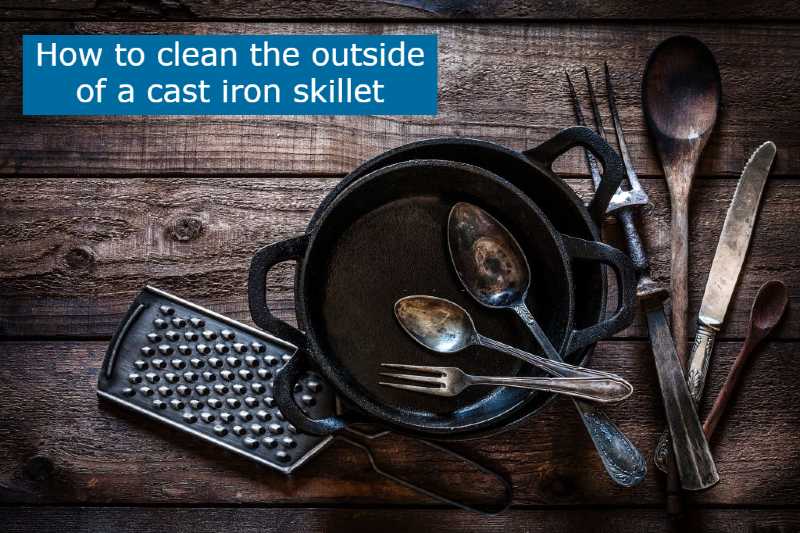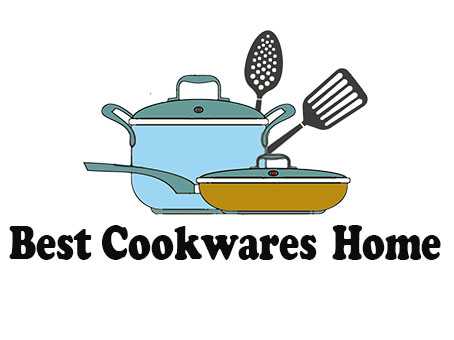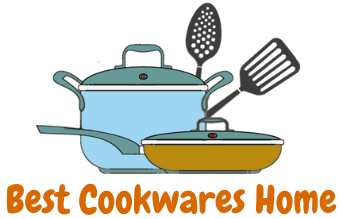
Have you ever been confronted with a grease buildup issue in your cast iron skillet? Whether you’re looking to get rid of old oils leftover from a gone-by meal, or a bit of meat that didn’t quite make it off the pan all at one time, you’ve come to the right place.
A cast-iron skillet is a real workhorse in anyone’s kitchen. It can take anything you throw at it and keep coming back for more. These skillets last forever and with the right amount of care, you can ensure yours goes the distance.
Cooking with cast iron has been around for a long time. In fact, no other material can provide great cooking results like a cast-iron skillet. The problem is that when you use your cast iron pan it gets sticky and greasy no matter how much effort you put into cleaning it.
The same process that enhances the flavor of food in a cast-iron skillet is what leaves it so difficult to clean. Cast iron skillets have fatty acids in them that mix with the food, creating a slick layer of oil on the surface of your pan. This is the reason that your skillets look so smooth and shiny when they’re new but after a few uses become covered in black grease from the outside. Skillets need the same care and maintenance that your griddle pans need.
The following article is written for the care and maintenance of cast iron cookware, in particular skillets. You will know how to clean your cast iron skillets from the inside, and from the outside.
Summary
How do You Clean the Outside of a Cast Iron Skillet – Top tested Methods
Here are the tested and proven ways to clean your cast iron skillet. The most effective way of fighting grease buildup is the combination of different methods.
Traditional Cast Iron Skillet Cleaning Method
The traditional cleaning method for cast iron skillets involves salt, water, and flour. Mix all three into a bowl until they are evenly distributed. Use the mixture to scrub the surface of your pan. This will remove any residual food and grease stuck to your skillet, but it also removes some oil.
Most people do not notice the difference because these skillets are so patinated that they can cover up a lot of abuse without showing their true colors. The problem with this method is that once you dry your skillet, the flour taste will remain.
Method 1
The process of cleaning is made easier with the use of baking soda. Mix half a cup of water and two tablespoons of baking soda together in your skillet until there are no more clumps. Fill the pan with boiling water just to cover the mixture. Let it sit overnight, then clean it off.
Method 2
Wash your cast iron skillet with some soap and water. Make sure you scrub the entire exterior of your pan, paying close attention to any spots that are still greasy or stuck on. Dry the pan quickly to avoid rusting, then heat it over a low flame until completely dry.
Method 3
You can use cast iron cleaner for this method. No matter how stubborn the mess is, a little elbow grease will take care of it.
The best way to avoid the greasy buildup is to make sure your pan is completely clean after every use. That means not leaving pieces of food on the surface or in between its grooves for long periods of time as these tend to burn over time and create a greasy surface.
Method 4
Using a wire brush and kosher salt is one of the most popular methods for cleaning cast iron skillets. The best part about this method is that your pan will come out as clean as new, and it’s cost-effective to boot! It works like this: fill up your cast iron skillet with enough water to cover the surface. Add a good amount of kosher salt and bring it to a boil. Use a wire brush or a cloth rag to scrub away any food particles from your pan until it’s free from all residue.
Now let’s move on to getting rid of those baked on spot, such as those burned onions you may have had to cook.
Method 5
For this method, place your cast iron pan on the stove and turn it up to medium heat. Use a piece of aluminum foil with some oil on it and rub it over the surface of your skillet. You can use any type of oil for this—just make sure it isn’t extra virgin olive oil or any other type of oil that might leave a taste in your food after cooking with the skillet. Once you have rubbed the surface, turn off your burner and let your pan cool down. Then wash it out with some warm water and dry it thoroughly to avoid rusting.
Method 6
Try putting a few drops of dishwashing liquid inside your cast iron skillet along with some warm water. Let it soak for about an hour before you scrub the surface clean with a stiff brush to remove any stuck-on food particles.
Method 7
For this method, place a large amount of coarse salt in a cast iron skillet and add a few drops of water. Use a cloth rag to rub the surface for about five minutes, making sure to apply pressure in long strokes along the grooves. If your skillet is still stuck on food particles at this point, you can add a bit more water and continue scrubbing until everything comes right off.
After that, wash it out with some warm water and dry it thoroughly to avoid rusting.
Method 8
Fill the bottom of your cast iron pan with a mixture of water and baking soda. Let it sit overnight, then clean it out with a rag or stiff brush to remove any stuck-on bits.
Method 9
Mix equal parts white vinegar and salt together in your skillet. Add just enough water to cover the mixture inside, then heat it on the stove just until it starts to simmer. Once that happens, turn off your burner and let it sit overnight. In the morning, rinse it out with a cloth rag or brush before drying thoroughly.
Method 10
This method is a bit more complicated than some of the others, but it does work if you have some time to spare. Start by making a paste out of cream of tartar and water, then apply it to the stained or greasy areas. Let this sit for about an hour, then use a cloth rag to scrub off any debris. If you’re dealing with burned-on food particles, sprinkle some baking soda onto your pan after that before adding some water. Let it boil for about five minutes, then wash out the pan with warm water and dry thoroughly before storing it away.
Read More: How to Clean a Griddle With Baking Soda
How to Take Care of Cast-Iron Skillet
Here are important tips to take care of cast-iron griddle
- When cooking with your cast-iron skillet, remember to use it for things that don’t burn easily so as not to ruin the surface.
- After you’re done cooking, let the pan cool down a bit before washing it out.
- Avoid soaking a hot cast-iron skillet in water because it can cause the surface to rust.
- If you’ve left any food particles on the pan, use a cloth rag with some warm water and salt to wipe them away before washing them out.
- Remember that cast-iron skillets are heavy, so be careful when picking them up
- Supplement your cast-iron skillet care routine with some wax paper or parchment paper to avoid having food stick to it.
And, you should also know how to season this cast iron pan well. Here are the steps:
1. Preheat oven to 450 degrees Fahrenheit (230 degrees Celsius).
2. Wash and dry thoroughly before applying a thin layer of vegetable oil with a paper towel.
3. Use aluminum foil to cover the bottom rack of your oven (if you’re using this method) and place the pan upside down on top of it. This is done because most ovens will leave some residue on the bottom of the pan which you want to coat with oil, but don’t want to get on the food you’ll be cooking.
4. Place the pan in the middle of your oven and bake for about an hour (and up to three hours).
5. Remove from the oven and let cool before rubbing a fresh coat of oil all over your skillet with a paper towel or cloth rag.
6. Repeat this process once every month for the best cast-iron skillet care results.
Watch this video for more tips about How to clean the outside of a cast iron skillet
Final Words
No matter which method you decide to use in order to clean your cast iron pan, the end result is always going to be something that looks brand new. After all, if you’re using a bit of elbow grease and these basic ingredients, what could go wrong? Just make sure you give it time to soak in between scrubbings so that everything comes off and you don’t damage your pan in the process.
Read More:
Pros And Cons Of Cast Iron Cookware
Can You Make Pancakes In a Cast Iron Skillet

Hi, Welcome to our Blog. We are a team of Professional Blogger and expert in Cookware, Kitchen Appliances. We Work for the latest Reviews for Cookware, Kitchen Appliances. You can give us your kind Suggestions for improvements of Blogs, Thank You
